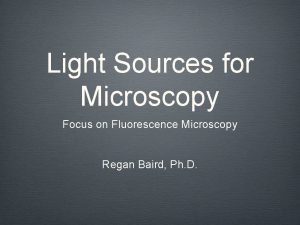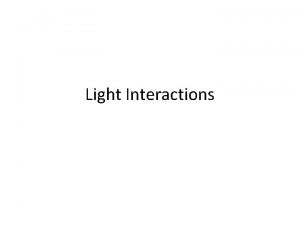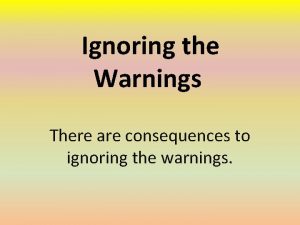The interactions of light with matter Ignoring fluorescence







- Slides: 7

The interactions of light with matter Ignoring fluorescence, the interactions of light with matter can be expressed thus: Io = Ireflected + Iscattered + Iabsorbed + Itransmitted transparent material translucent material

The Beer-Bouger-Lambert Law and emax The Beer’s law: At a given l the proportion of light absorbed by a transparent medium is independent of the intensity of the incident light and is proportional to the number of absorbing molecules through which the light passes. I 0 is the intensity of incident light I is the intensity of transmitted light k is the absorption coefficient l is the path length through the sample e is molar extinction coefficient or molar absorptivity c is the concentration in mol/L So k ≈ 2. 303 e c

Absorption Intensity and Oscillator Strengths The shape of an electronic absorption is due primarily to the vibrational sublevels of the electronic states (Franck-Condon Principle). The intensity of an absorption band is often and conveniently described in terms of the maximum of molar absorptivity emax but, unfortunately, this value is not directly related to any quantity obtained directly from theory. A more related value is the dipole strength D and represents the electronic transition probability. Δl is the bandwidth at emax/2 In an electronic transition, an electron is promoted from one molecular orbital to a higher-lying molecular orbital while the molecule goes from its ground state (S=0) to its excited states (S=1, 2, 3, …). This migration of charge creates a momentary dipole, called the electric transition dipole moment (m), which has both direction and intensity (vector). ן m √ = ן D

Electronic, Vibrational, and Rotational States of Molecules S=0

The Franck-Condon Principle

Classification of Electronic Transitions in Molecules













